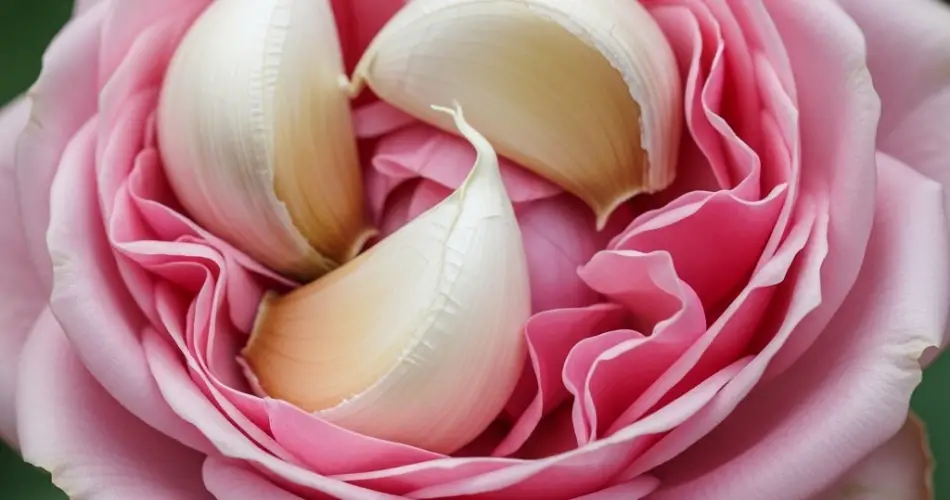Garlic, affectionately nicknamed “the stinking rose,” is most often recognized as a flavorful culinary ingredient and natural remedy. But what many gardeners don’t realize is that garlic also holds surprising power as a natural fertilizer and pest deterrent. Packed with sulfur compounds, antibacterial properties, and minerals, garlic can help nourish plants and protect them from common diseases—all without the use of harsh chemicals.
Whether used in homemade sprays or incorporated into compost and soil mixes, garlic can support stronger roots, healthier growth, and a more resilient garden ecosystem. Let’s explore how garlic works as a fertilizer, how to prepare it, and which plants benefit most from its powerful properties.
Why Garlic Works as a Natural Fertilizer
Garlic contains a range of bioactive compounds that make it useful beyond the kitchen. Its primary active ingredient, allicin, is known for its antifungal and antibacterial properties. In the soil, these natural compounds can help suppress harmful microbes while promoting healthy soil biology.
Here’s what makes garlic a unique addition to your gardening toolkit:
-
Sulfur Content: Garlic is rich in natural sulfur, which is essential for plant metabolism and disease resistance.
-
Antimicrobial Action: Garlic can help combat soil-borne pathogens, root rot, mildew, and fungal infections.
-
Pest Repellent: Its strong scent acts as a deterrent to many common pests, including aphids, whiteflies, and some beetles.
-
Trace Minerals: Garlic contains small amounts of nutrients like calcium, potassium, magnesium, and phosphorus that contribute to healthy root development and plant vigor.
How to Make Garlic Fertilizer at Home
There are several easy ways to turn garlic into an effective liquid or solid fertilizer, depending on your needs and the condition of your garden.
1. Garlic Fertilizer Spray (Liquid Feed & Pest Deterrent)
This all-purpose garlic spray works both as a mild foliar feed and as a natural repellent for soft-bodied pests.
Ingredients:
-
2–3 large garlic cloves
-
1 liter (4 cups) of water
-
Optional: A few drops of liquid soap (acts as a sticking agent)
Instructions:
-
Crush or finely chop the garlic cloves.
-
Boil them in half the water for 5–10 minutes.
-
Remove from heat and let the mixture steep for a few hours or overnight.
-
Strain out the solids and add the remaining water.
-
Add a few drops of liquid soap if desired.
-
Pour into a spray bottle and use within a few days.
How to use it: Spray directly onto the leaves and soil around plants in the early morning or late afternoon. Use once a week or after heavy rain.
2. Garlic Compost Booster
Garlic peels and unused cloves can be added to your compost bin to increase microbial activity and enrich the nutrient profile.
Tip:
Crush the garlic slightly before tossing it into the compost to help it break down faster and release its natural sulfur compounds.
3. Garlic Soil Drench
This is especially useful for root crops and young seedlings prone to root diseases or damping-off.
How to do it:
Prepare the garlic water as described above, but instead of spraying it on leaves, pour it directly into the soil around the plant base. Do this every 10–14 days for prevention and growth support.
Which Plants Benefit Most from Garlic Fertilizer?
Garlic-based fertilizers can be used on a wide variety of plants, but some crops benefit especially well:
-
Tomatoes: Helps prevent fungal diseases like early blight and boosts overall plant resilience.
-
Peppers: Encourages strong root systems and keeps pests like aphids at bay.
-
Cabbage family (broccoli, kale, cabbage): Deters cabbage worms and flea beetles while promoting vigorous growth.
-
Roses and flowering shrubs: Helps control black spot and powdery mildew naturally.
-
Leafy greens: Keeps slugs and other leaf-eating pests away without harming the plant.
Avoid using garlic sprays on delicate seedlings more than once a week, and test on a small area first to check for any sensitivity, especially if you include soap in the mixture.
Companion Planting with Garlic
Beyond liquid fertilizer, garlic can also be used strategically in the garden as a companion plant. Growing garlic near other crops can help naturally repel pests and improve overall garden health.
Good companions include:
-
Carrots
-
Lettuce
-
Strawberries
-
Tomatoes
-
Roses
Avoid planting garlic too close to legumes (like beans or peas), as it may inhibit their growth.
A Natural Ally in the Garden
Garlic fertilizer offers a safe, eco-friendly alternative to synthetic sprays and chemical fertilizers. It helps support healthy roots, boosts disease resistance, and gently nourishes your soil without disrupting the natural ecosystem of your garden. Plus, it’s incredibly easy to make using ingredients you likely already have at home.
Whether you’re growing vegetables, herbs, or ornamentals, incorporating garlic into your fertilizer routine is a smart way to promote stronger, more resilient plants—naturally. So next time you reach for a bulb of garlic, consider saving a few cloves for your garden. The “stinking rose” might just become one of your favorite tools for garden success.



